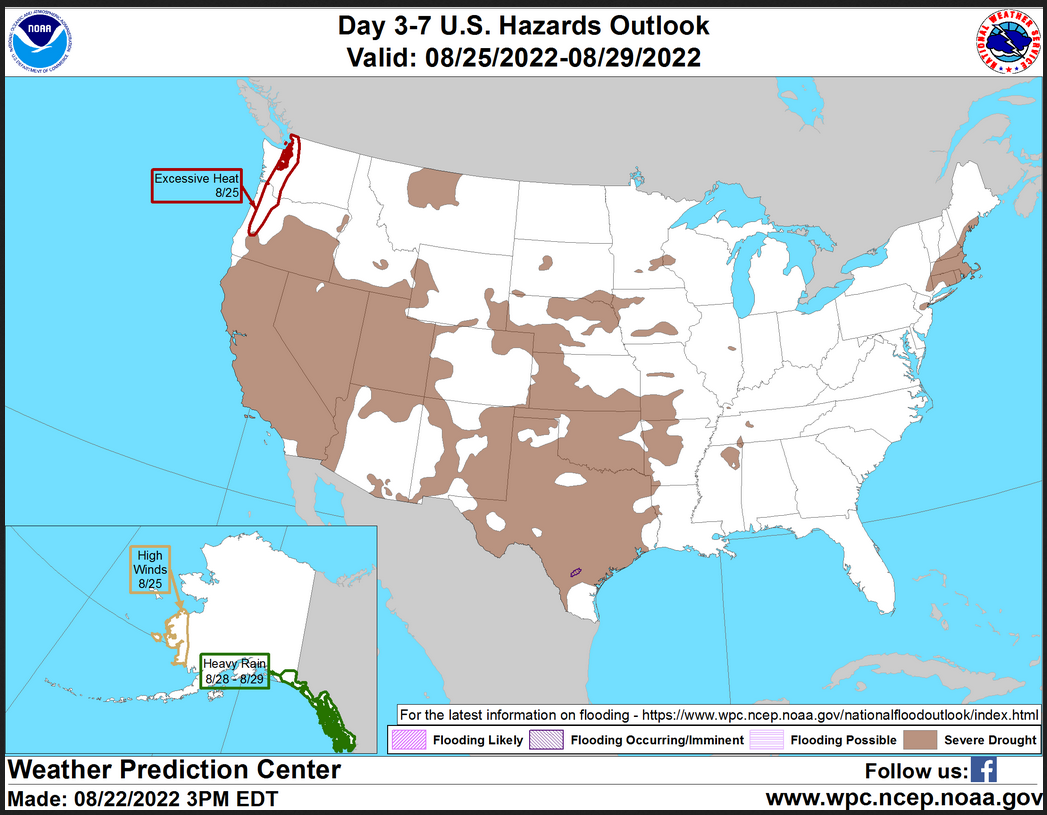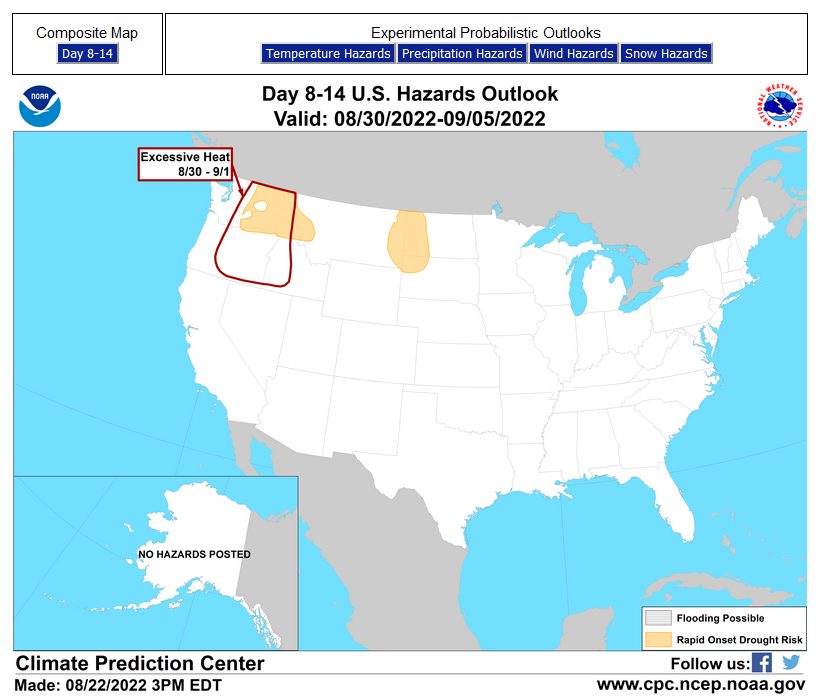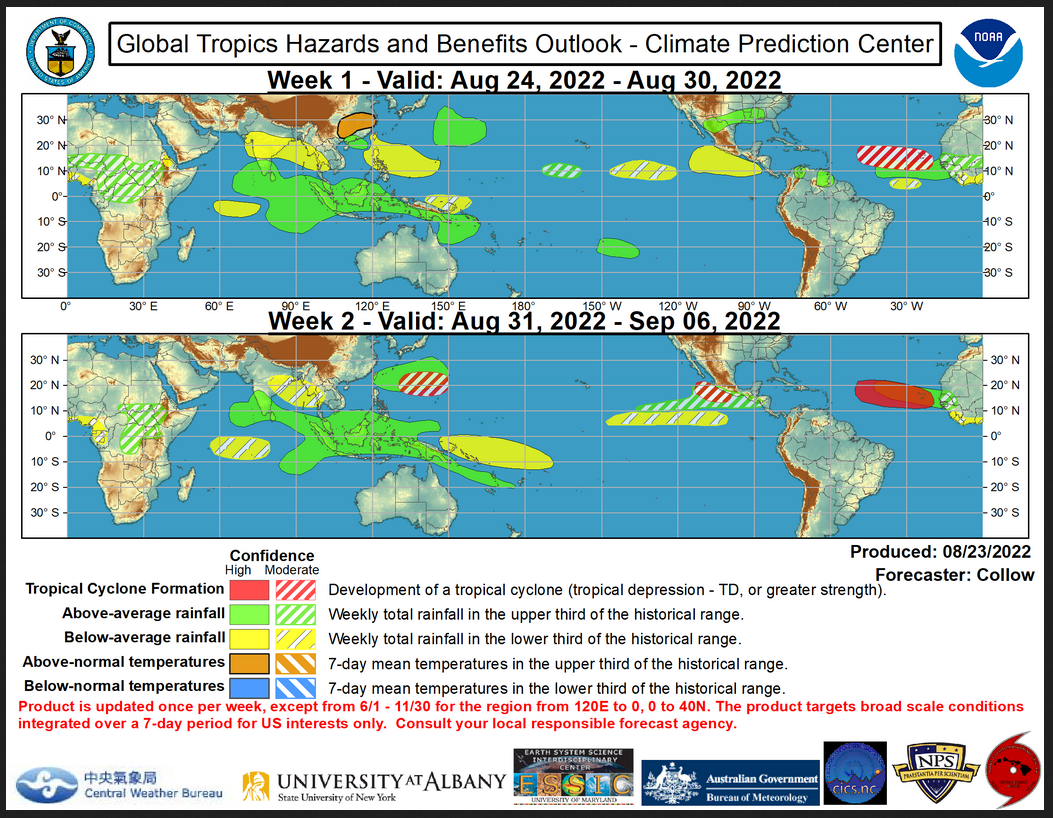Here is what we are paying attention to today and the next 48 hours from this morning’s NWS Forecast.
...Heavy Rain and Flash Flooding threats over the lower Mississippi Valley may shift farther east into Alabama... ...Above average temperatures to continue from the inland valleys of California into the Great Basin and Pacific Northwest, while below average temperatures expected across the South from the Southern Plains into the Southeast...
Continuation of the NWS Short Range Forecast (It is updated twice a day and these updates can be found here.
Scattered to widespread showers and thunderstorms will remain across portions of the South and Southeast as upper-level energy passes over deep moisture pooled along a slow-moving surface front. After receiving 6-10+ inches of rain across northeastern Texas and into Louisiana, the heaviest rains have shifted east into Mississippi early this morning. This system is forecast to gradually weaken over the next couple of days but it will remain be in the vicinity of central to eastern Gulf states. Periods of moderate to heavy rainfall can be expected today, especially over the lower Mississippi Valley, and may spread into Alabama on Thursday. The heavy rainfall will increase the threat of localized flooding and runoff issues. A slow tapering trend of the heavy rain is forecast by Friday but more scattered thunderstorms can be expected to develop along the Gulf Coast. Meanwhile, showers and thunderstorms will fire up today and into the evening across the northern Plains as two cold fronts sink southward from Canada. The northern High Plains appears to be more favorable for the thunderstorms to contain heavy downpours given the presence of high moisture content. As a wave of low pressure forms along the front, these showers and storms will expand eastward into the upper Midwest today before reaching into the Great Lakes on Thursday. By early on Friday, interior New England will see these activities arriving with the approach of the frontal wave. Meanwhile, monsoonal showers and thunderstorms will be a daily occurrence across the Four-Corners region. With the extent of cloud cover and rain, much of the South will be cooler than average, with the potential for record low maximum temperatures today across the lower Mississippi Valley. Above average temperatures are expected to persist across the Great Basin, Pacific Northwest and interior valleys of California thus continuing the increased risk for fire weather across these regions. Above average temperatures are also expected from the central Plains to New England ahead of the front and the developing frontal wave for the next couple of days.
Maps that relate the forecast to geography can be found by clicking Here for Day 1 and Here for Day 2.
Here is a 60-hour animated forecast map that shows how the short-term forecast is expected to play out.
If it needs to be updated click here.
HAZARDS OUTLOOKS
Click he re for the latest complete Day 3 -7 Hazards forecast which updates only on weekdays. Once a week probably Monday or Tuesday I will update the images. I provided the link for readers to get daily updates on weekdays. Use your own judgment to decide if you need to update these images.
Worldwide Tropical Forecast
(This graphic updates on Tuesdays) If it has not been updated, you can get the update by clicking here
Detailed Maps and Reports for the Western Atlantic and the Pacific Oceans
Below are three maps that summarize the situation for the Atlantic, Eastern and Central Pacific. Additional information can be accessed by clicking HERE
First the Atlantic
Click to view the forecast map and have access to additional information https://www.nhc.noaa.gov/gtwo.php?basin=atlc&fdays=5
Then Eastern Pacific
Click to view the forecast map and have access to additional information https://www.nhc.noaa.gov/gtwo.php?basin=epac&fdays=5
Then Central Pacific
Click to view the forecast map and have access to additional information https://www.nhc.noaa.gov/gtwo.php?basin=cpac&fdays=5
And the Western Pacific
Click to view the forecast map and have access to additional information https://www.metoc.navy.mil/jtwc/jtwc.html
Some Intermediate-Term Outlooks
Links to “Outlook” maps and discussions for three time periods. Days 6 – 10, Days 8 – 14, and Weeks 3 and 4. An outlook differs from a forecast based on how NOAA uses these terms in that an “outlook” presents information from deviation from normal and the likelihood of these deviations.
You have to click on the links because they do not update automatically and I do not want to have stale images in the article. But it is not difficult to click on a link and you get a large image plus a discussion. On Fridays in a separate article, we will show the images and provide a link in this article that article. But remember what you will see is the images as of Friday. But here you can get the current images simply by clicking on them. Then hit the return arrow at the upper left of your screen to return to the article. You will not find this information easily anywhere else.
Right now you can find these maps here (We show them every Friday there but you can click above and find them).
World Forecast for Day 6 (Currently Set for Day 6 but the reader can change that)
World Weather Forecast produced by the Australian Bureau of Meteorology. Unfortunately, I do not know how to extract the control panel and embed it into my report so that you could use the tool within my report. But if you visit it Clic k Here and you will be able to use the tool to view temperature or many other things for THE WORLD. It can forecast out for a week. Pretty cool. Return to this report by using the “Back Arrow” usually found top left corner of your screen to the left of the URL Box. It may require hitting it a few times depending on how deep you are into the BOM tool. Below are the current worldwide precipitation and air pressure forecasts for six days out. They will not auto-update and right now are current for Day 6. If you want the forecast for a different day Click Here I will try to update this map each day but you have the link so you can access the dashboard and get a wide variety of forecasts.
I mostly rely on the reader to interpret world maps. For this map, areas of expected precipitation for the date and time shown are clearly shown.
The number of High-Pressure systems shown is called the Wave Number. Maybe I will discuss WN someday. But it shows how many Rossby Waves there are around the World. Sometimes they are hard to count. Counting Low-Pressure systems should provide the same WN. Rossby Waves are the way the temperature distribution of the Planet remains in balance. It is basically the science of fluid dynamics. It can be very helpful in predicting the movement of weather patterns. You can snip an area of interest and move it into MS Paint and enlarge it.
Month to Date Information
Month to date Temperature can be found at https://hprcc.unl.edu/products/maps/acis/MonthTDeptUS.png
Month to date Precipitation can be found at https://hprcc.unl.edu/products/maps/acis/MonthPNormUS.png







